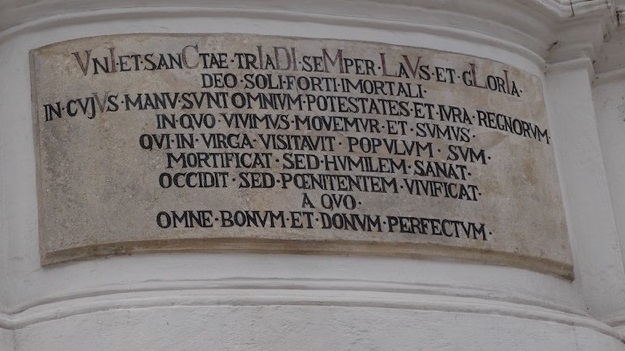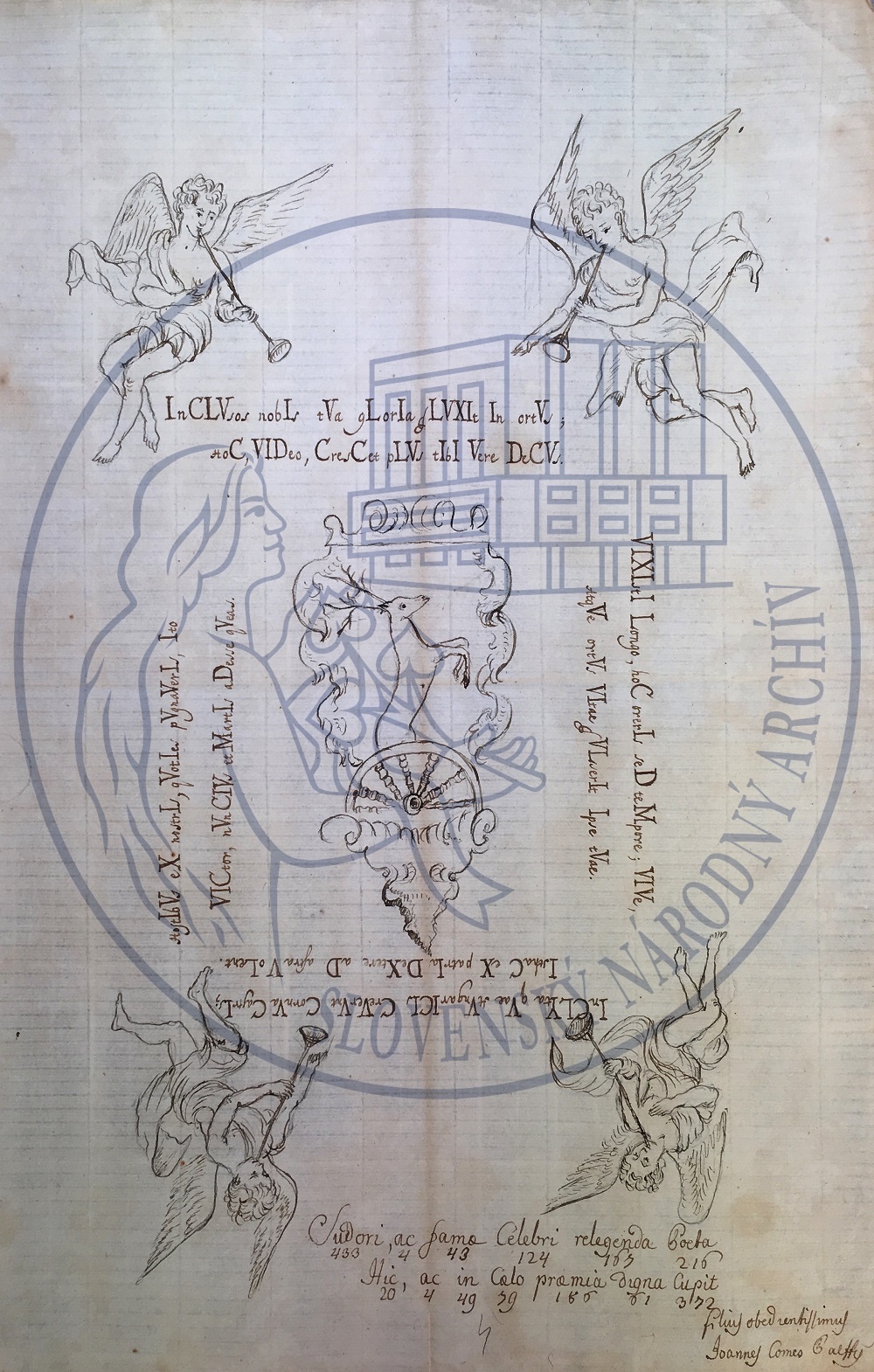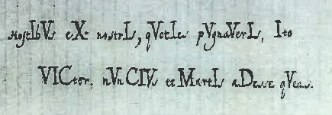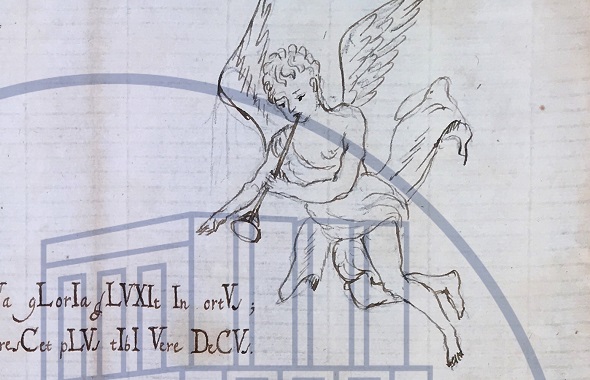Blog reader Eugen Antal has found a beautiful chronogram in a Slovak archive. Can a reader decode it?
Today I’m going to write about a common kind of steganography that has never played much of a role in my publications: chronograms. A chronogram is an inscription in which specific letters, interpreted as Roman numerals, stand for a particular date when when added.
The only chronogram I have ever written about is located in Klosterneuburg near Vienna, Austria:

Source: Anonymous (used with permission)
As can be seen, the following letters are enlarged and written in red: V, I, C, I, D, I, M, L, V, L, I, V. If we add the Roman numerals represented by these letters, we get:
5 + 1 + 100 + 1 + 500 + 1 + 1000 + 50 + 5 + 50 + 1 + 5 = 1719
1719 is the year when this plate (and the column it is attached to) was built.
As can be read on Wikipedia, many more chronograms are known to exist. In most cases, the marking of the letters is less obvious than on the column plate shown above. So, a chronogram can be regarded as an information hiding technique, i.e., as steganography, though the message hidden is usually not secret.
An unknown chronogram?
All chronograms I have seen so far are included in public inscriptions on building fronts, in churches or on memorials. Blog reader (and HistoCrypt publication chair) Eugen Antal …

Source: Schmeh
… from Bratislava has now provided me scans of a chronogram he found in a Slovak archive. It only exists as a drawing (at least, Eugen and I are not aware of a real-world version of it). Unfortunately, this chronogram was a single find without any additional information. So, we don’t know who created it and when it was made.

Slovak National Archive. Family archive Pálffy Červenokamenská línia. Box num. 137, inv. n. 1195
The first question I ask myself is, of course, what the Roman numerals mean. My attempt to decode them looks as follows:
Top

I CLV L V L I LVXI I V = 344
C VID C C LV I I V DCV = 1466
Left

IV X L V I V V L I = 133
VIC V CIV M L D V = 1782
Right

VIXL I I C L D M VIV = 1729
V V VI VL I I V = 78
Bottom

I CLY V V ICL C V V C V C L = ?
I C X L D X D V L = 1226
To be honest, I have no idea what these numbers are supposed to mean. Do they encode one or several years (if not, this would be, by definition, not a chronogram)?
And then, I wonder what the letter Y means in the bottom section. Y is not a Roman numeral. Should it be read as a V? Or as a combination of I and V? Perhaps, a reader can help.
A cryptogram?
Let’s now look at the text below the chronogram: 
Below almost every word there is a number:
433 4 43 124 163 20 4 49 79 186 61 372
This looks like a short message encrypted in a nomenclator. If my assumption is correct, it will be as good as possible to decipher this cryptogram without having the substitution table. Can a reader make sense of this note anyway?
And, finally, can a reader knowledgeable in art history estimate when this chronogram was created? My (layman) guess is that it was made in the Baroque era, i.e., some time between the early 17th and the mid-18th century. Better-founded guesses are welcome.
Follow @KlausSchmeh
Further reading: The Langelsheim inscription: an unsolved cryptogram on a baroque altar
Linkedin: https://www.linkedin.com/groups/13501820
Facebook: https://www.facebook.com/groups/763282653806483/



Kommentare (23)